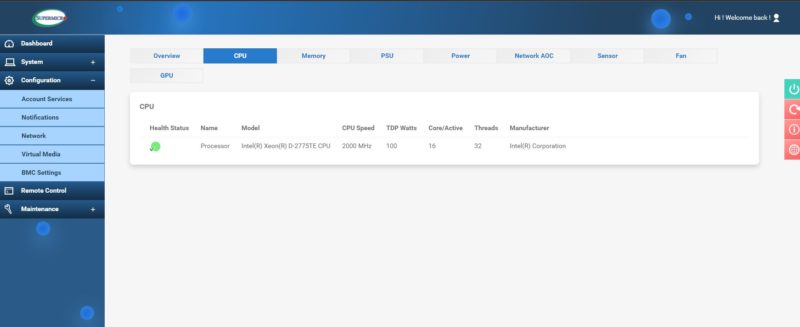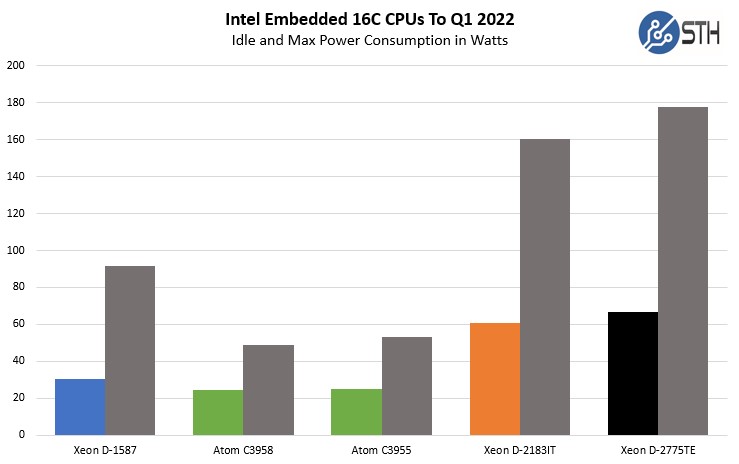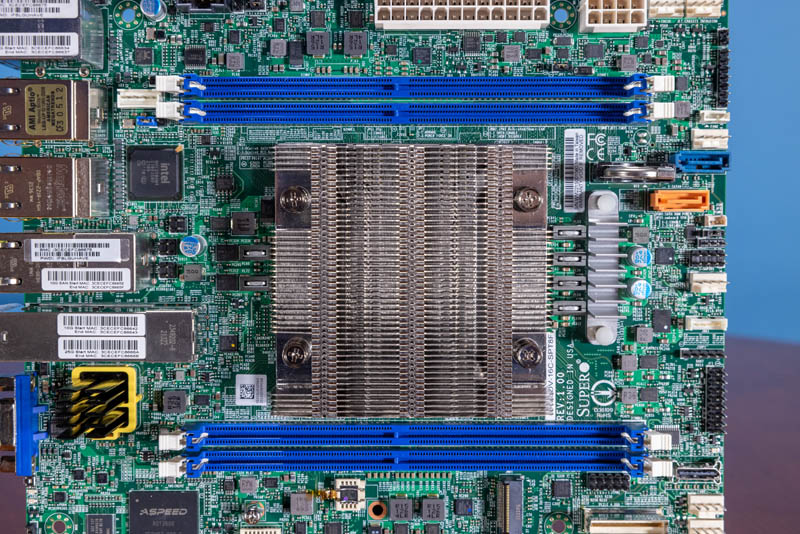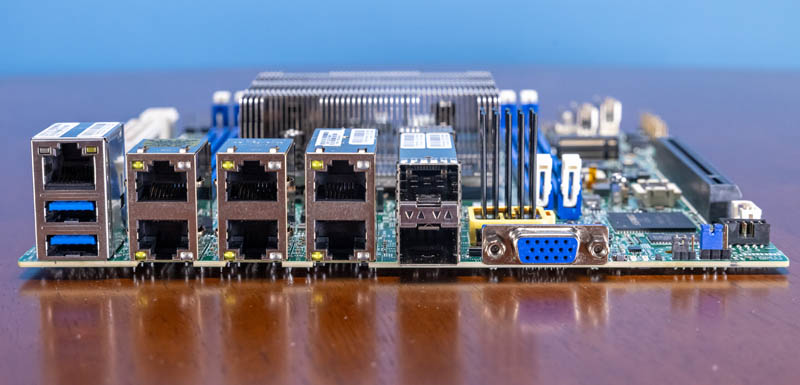Supermicro X12SDV-16C-SPT8F Power Consumption
Power consumption is significant in this platform. It has 25GbE, 10Gbase-T, 1GbE and four memory channels. The biggest power-using component, though is the 100W TDP Intel Xeon D-2775TE.

In the context of a system with redundant cooling, here is a look at a max power consumption run down to idle. We never hit 200W, for the entire system, with its redundant power supplies, but we also were well above a 1A 120V inexpensive colocation power envelope that we could stay within years ago. This is more of a 1A 208V solution.

One of the fun things is that we have tested the 16-core CPUs across multiple lines in Supermicro embedded platforms. As a result, we have a fairly interesting view of the 16-core embedded CPU power consumption when we put this into a more makeshift cooling solution that we used previously:

Here, we saw slightly more power being used than in the previous generation, but we also get more CPU performance, new acceleration technology, and PCIe Gen4/ 25GbE so there is more going on than when we looked a the previous generation. One will notice we do not have the Atom C5000 / P5000 series here because we have not tested them in Supermicro platforms so we did not want to add them to this chart.
Final Words
The biggest obstacle in this motherboard is going to be the price. Just the Intel Xeon D-2775TE is a $1716 part from Intel in 1K quantities. With the Xeon D-2100 series, we saw pricing track the 1K quantities for server and systems vendors. Beyond that, there is a motherboard that this needs to go on and usually, vendors have some markup on embedded CPUs since they are soldered on. Even though we do not have pricing on this, our sense is that this is in the $2000-3000 range. Given the 1U systems based on these motherboards start at around $3700 street price, our sense is the board is in the upper portion of that range. If you need the compact embedded platform, then that makes sense. If you do not, it would be hard not to look at just getting a more mainstream 16 or 24-core Ice Lake Xeon CPU.

The other feature we would have liked to have seen is a SKU with Intel QAT support. We just did a Intel QuickAssist in Ice Lake Servers What You Need to Know piece showing how QAT works. Many of the applications for a compact motherboard like this also are the same types of devices that traditionally utilize QAT support.
Our next part in that series will be Ice Lake-D with QAT, but we could not use this motherboard for that story because QAT is not enabled on the Intel Xeon D-2775TE. Supermicro can produce these boards with different CPUs, so it can likely make them with QAT for customers. This is more of a comment for Intel that we wish it was on every SKU. We do realize that there are export control reasons that it is not enabled on every SKU, but it is still our feedback to Intel here.

With the embedded platform, not only are you getting a mATX platform with the 16-core CPU, but you are also getting the dual 25GbE, dual 10GbE, and quad 1GbE NICs. That is a lot of networking connectivity built-in that would be an add-in card otherwise.

There is something to be said about being able to pack this much into such a small package. We are not necessarily getting massive IPC gains with this, but features like PCIe Gen4 and 25GbE support are the big upgrades.




Ah, we will have exciting homelab performance 5-6 years down the road :)
Are those boards even available? Since the launch this April Xeon-D 1/27xx was pretty much nonexistent.
What’s the purpose of such boards? Building a router / firewall which consumes >100W?!
Edge compute. Websites doing processing before it gets to the database. Though I run a whole site on an older D-1521, you could do it on one of these with the right storage mix.
OVH has a bunch of this kind of server, though they build them into stacks rather than chassis. Pile them high, lease them cheapish.
Its very nice. I’m impressed by all of the onboard network adapters.
I wonder why the occulink and M.2 are PCIe Gen3 instead of Gen4. Is it because those go through the PCH?
The new IPMI user interface is pretty cool too
I hope there will be a compatible active cooler especially too for the Xeon D-1700 series. If the X11SDV-8C+ heatsink/cpu-cooler will fit? We will find it out sooner or later…
“dreams about a small NAS with a mirror of 7,68tb-15,3tb pcie gen4 nvme drives and 25gbe”